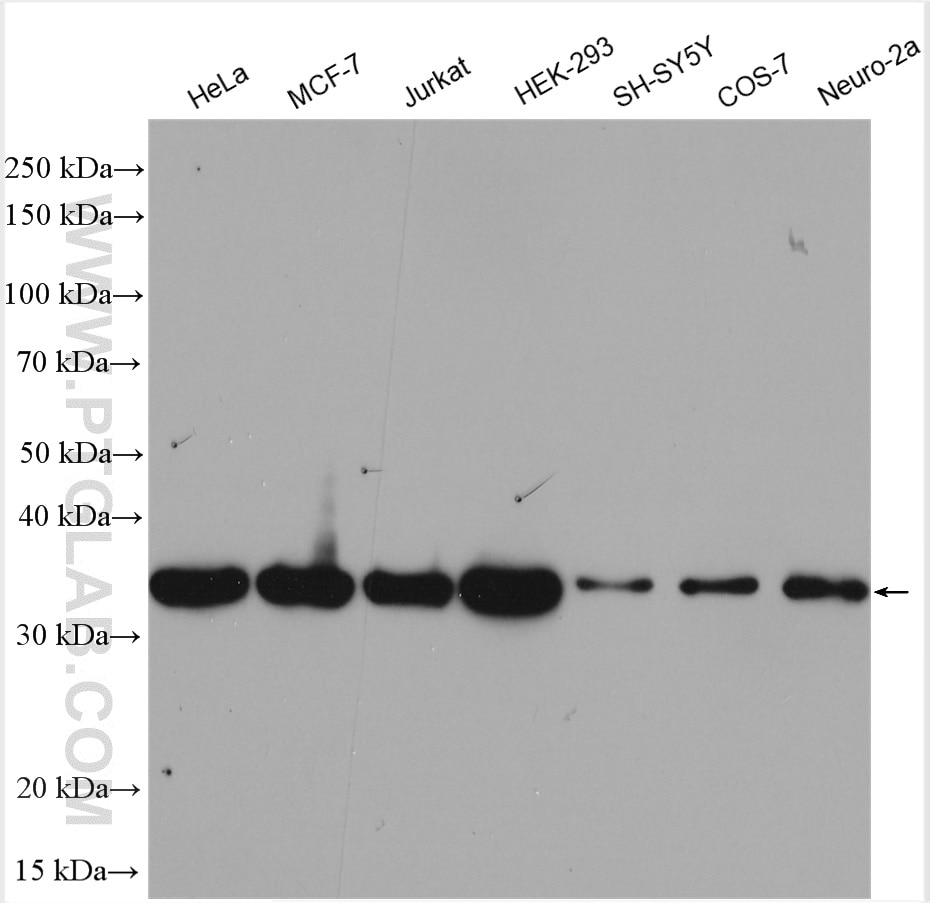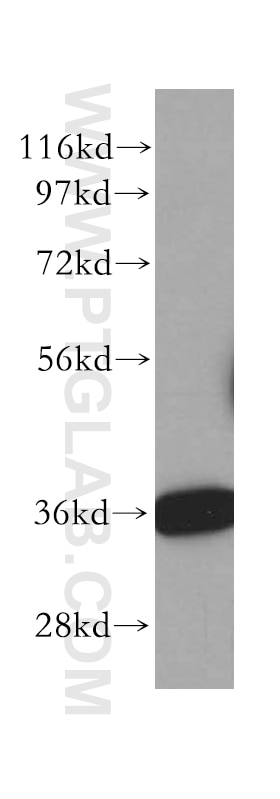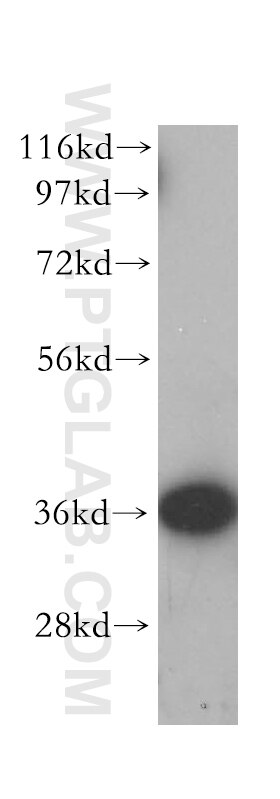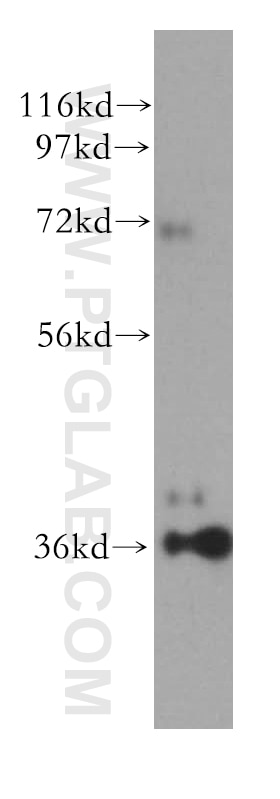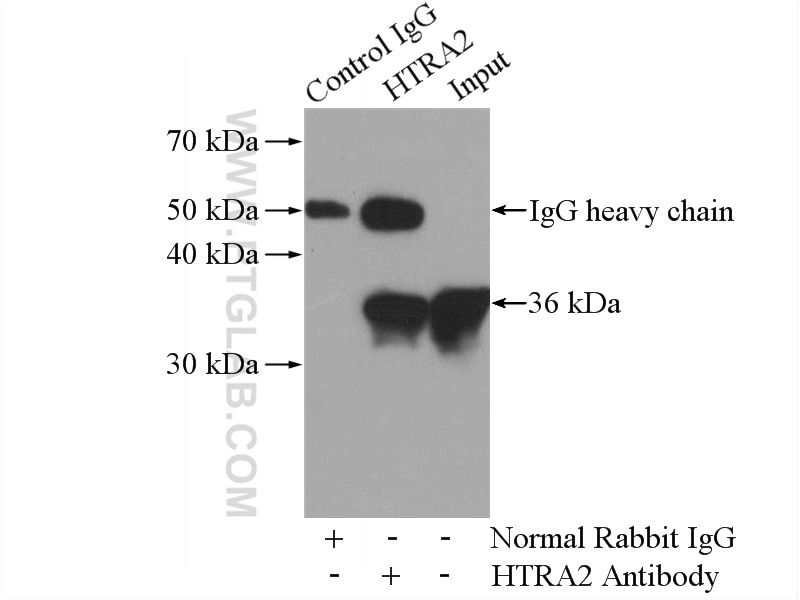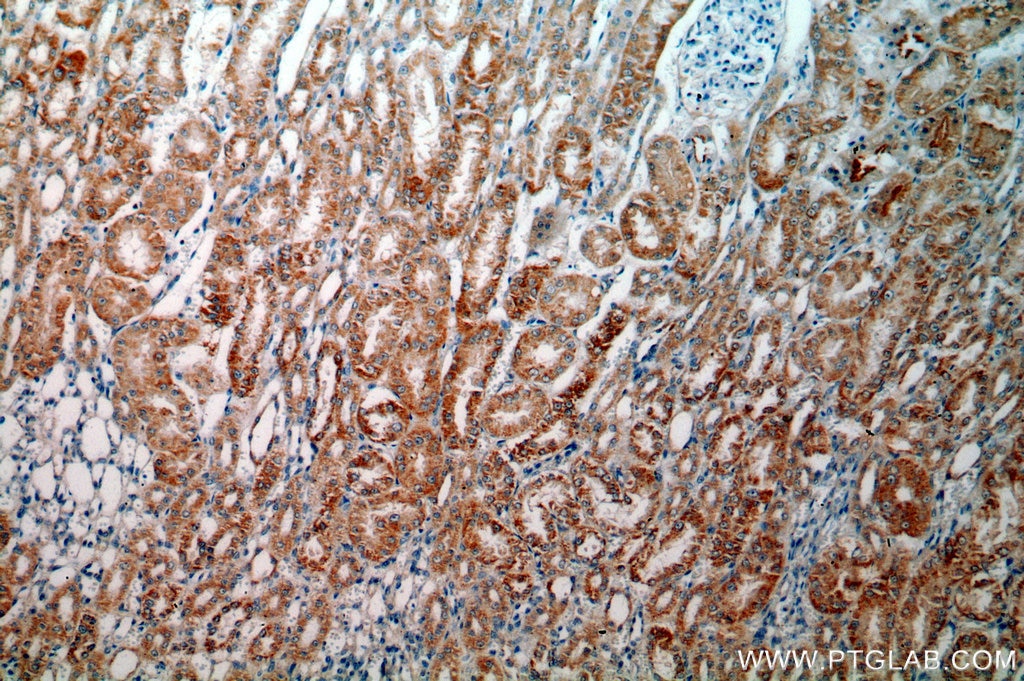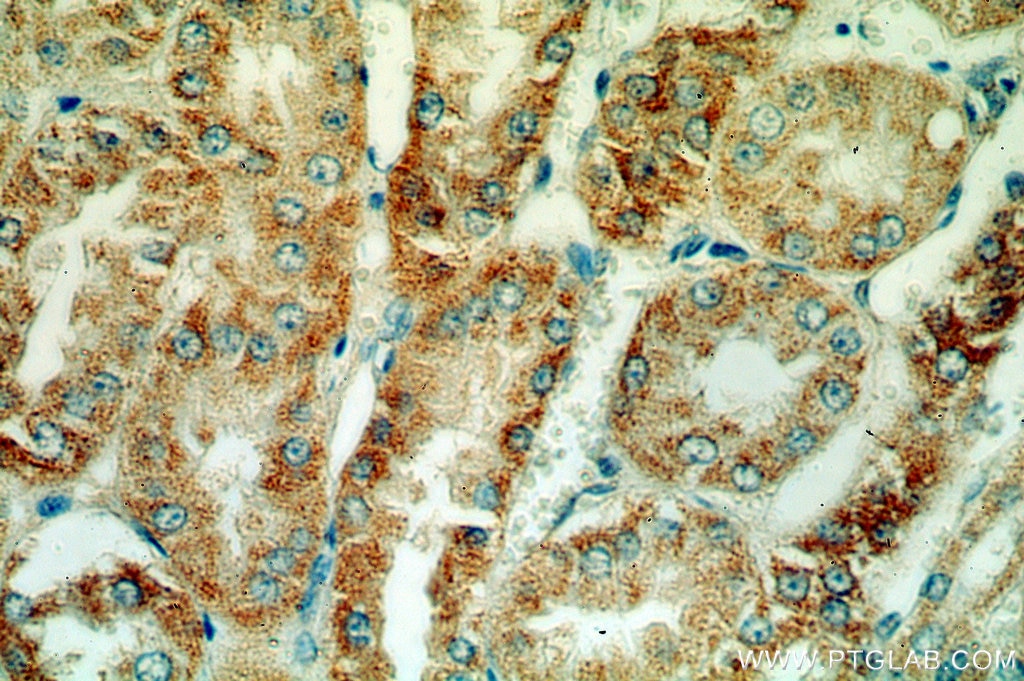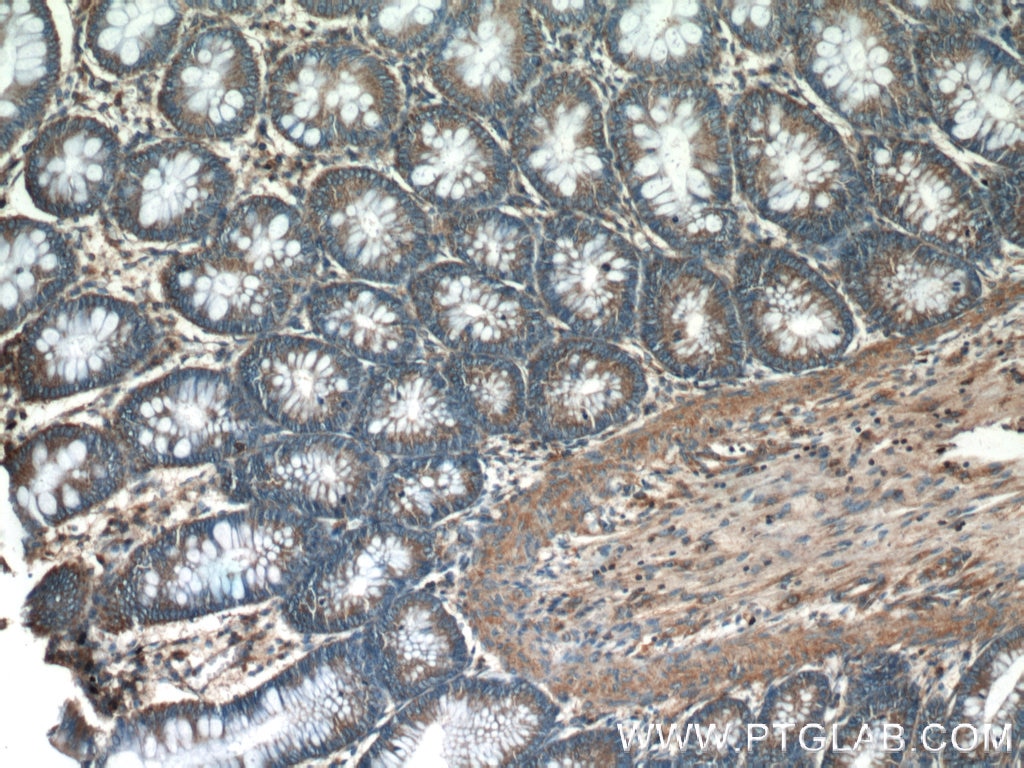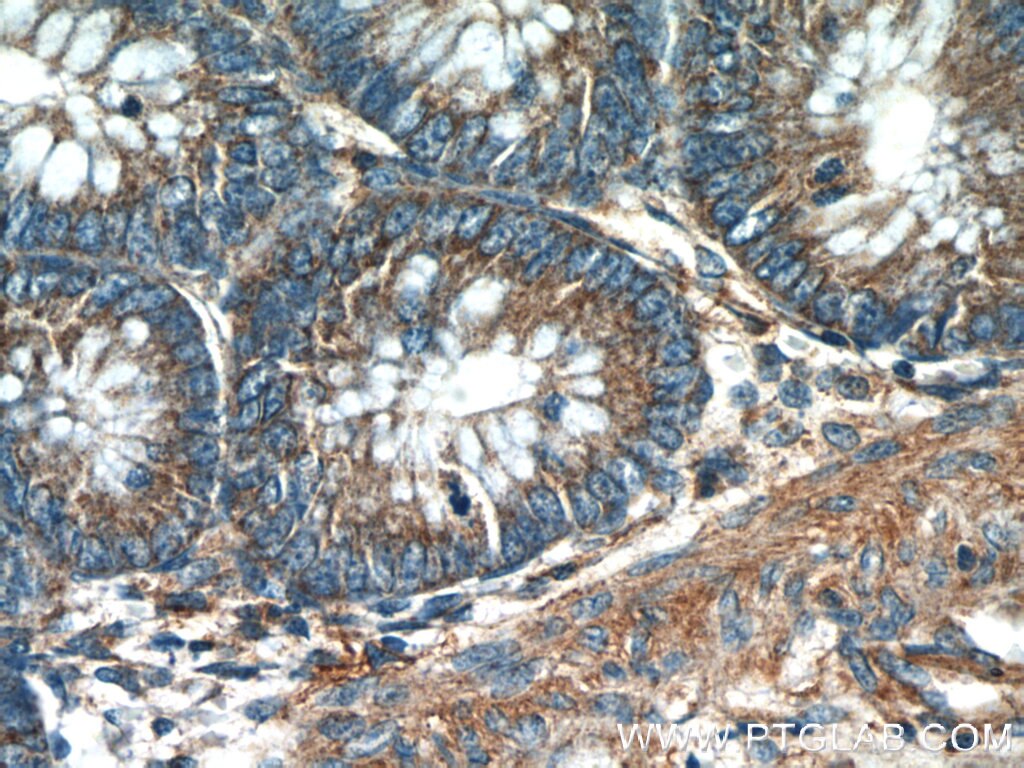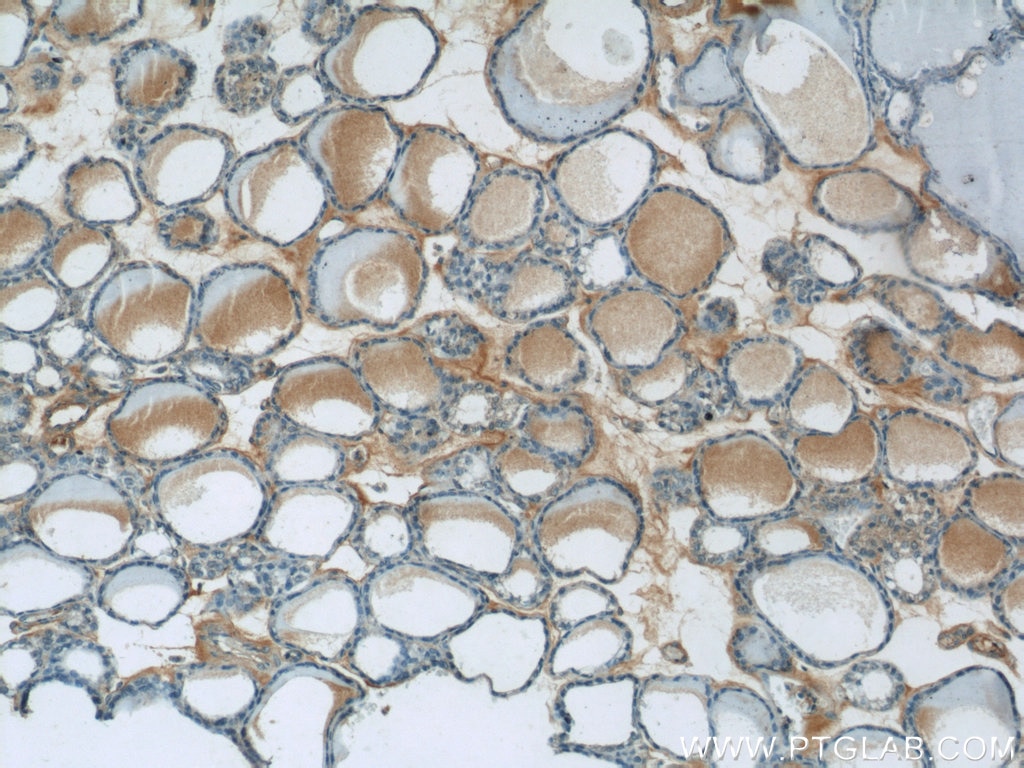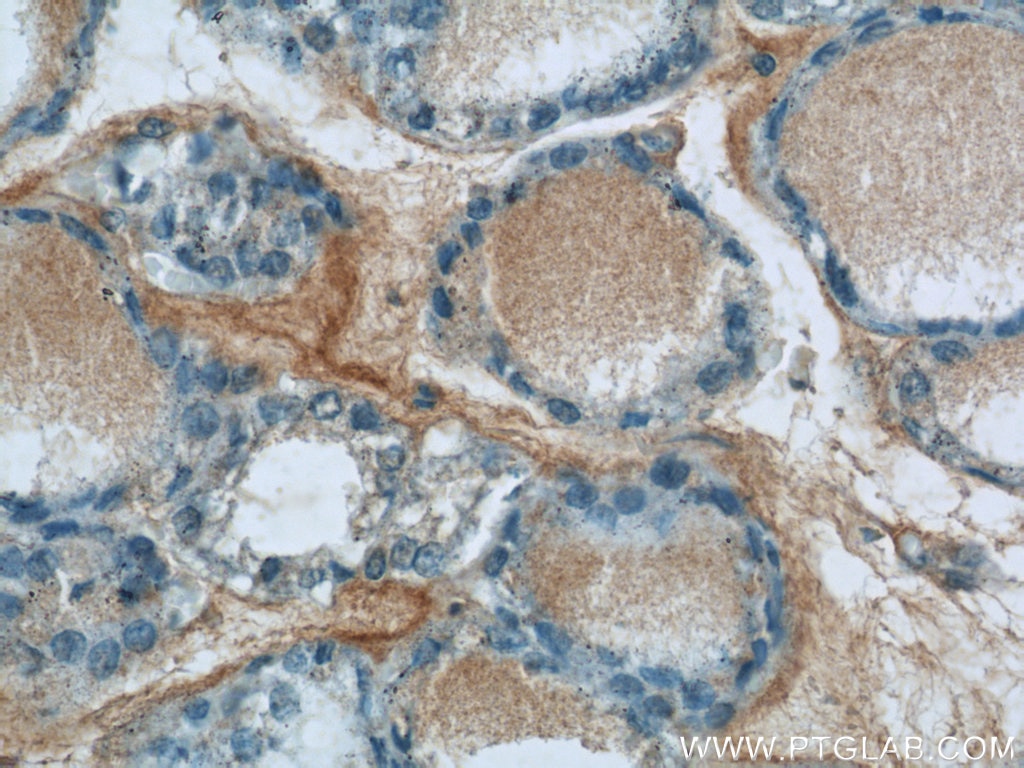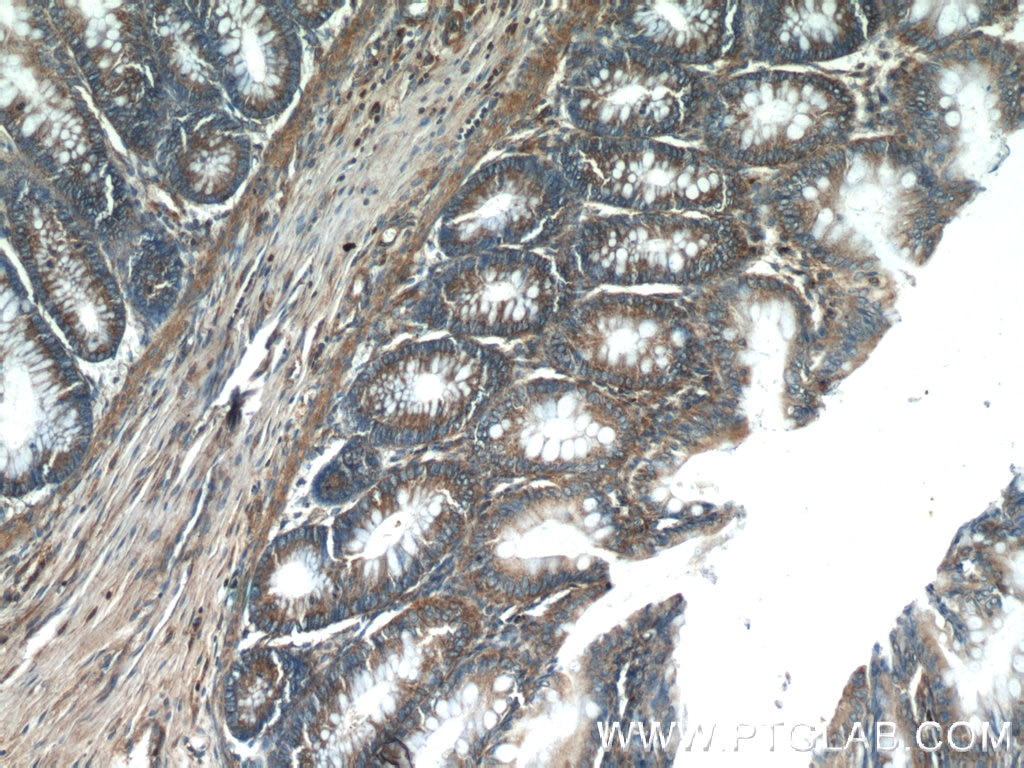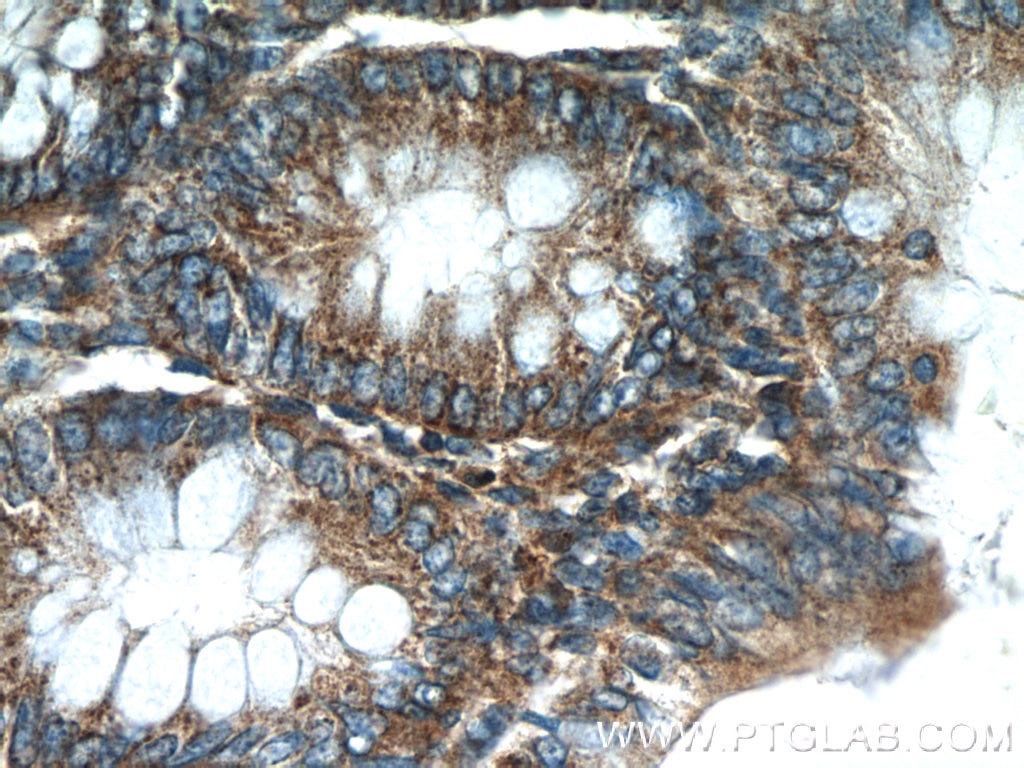- Phare
- Validé par KD/KO
Anticorps Polyclonal de lapin anti-HTRA2
HTRA2 Polyclonal Antibody for WB, IP, IHC, ELISA
Hôte / Isotype
Lapin / IgG
Réactivité testée
Humain, rat, singe, souris et plus (2)
Applications
WB, IHC, IF, IP, ELISA
Conjugaison
Non conjugué
N° de cat : 15775-1-AP
Synonymes
Galerie de données de validation
Applications testées
| Résultats positifs en WB | cellules HeLa, cellules COS-7, cellules HEK-293, cellules Jurkat, cellules MCF-7, cellules Neuro-2a, cellules Raji, cellules SH-SY5Y, tissu cardiaque humain, tissu de muscle squelettique de souris |
| Résultats positifs en IP | cellules Raji |
| Résultats positifs en IHC | tissu rénal humain, tissu de côlon humain, tissu thyroïdien humain il est suggéré de démasquer l'antigène avec un tampon de TE buffer pH 9.0; (*) À défaut, 'le démasquage de l'antigène peut être 'effectué avec un tampon citrate pH 6,0. |
Dilution recommandée
| Application | Dilution |
|---|---|
| Western Blot (WB) | WB : 1:2000-1:12000 |
| Immunoprécipitation (IP) | IP : 0.5-4.0 ug for 1.0-3.0 mg of total protein lysate |
| Immunohistochimie (IHC) | IHC : 1:20-1:200 |
| It is recommended that this reagent should be titrated in each testing system to obtain optimal results. | |
| Sample-dependent, check data in validation data gallery | |
Applications publiées
| KD/KO | See 3 publications below |
| WB | See 15 publications below |
| IHC | See 3 publications below |
| IF | See 4 publications below |
Informations sur le produit
15775-1-AP cible HTRA2 dans les applications de WB, IHC, IF, IP, ELISA et montre une réactivité avec des échantillons Humain, rat, singe, souris
| Réactivité | Humain, rat, singe, souris |
| Réactivité citée | rat, Humain, poulet, singe, souris, Hamster |
| Hôte / Isotype | Lapin / IgG |
| Clonalité | Polyclonal |
| Type | Anticorps |
| Immunogène | HTRA2 Protéine recombinante Ag8455 |
| Nom complet | HtrA serine peptidase 2 |
| Masse moléculaire calculée | 49 kDa |
| Poids moléculaire observé | 36 kDa |
| Numéro d’acquisition GenBank | BC000096 |
| Symbole du gène | HTRA2 |
| Identification du gène (NCBI) | 27429 |
| Conjugaison | Non conjugué |
| Forme | Liquide |
| Méthode de purification | Purification par affinité contre l'antigène |
| Tampon de stockage | PBS with 0.02% sodium azide and 50% glycerol |
| Conditions de stockage | Stocker à -20°C. Stable pendant un an après l'expédition. L'aliquotage n'est pas nécessaire pour le stockage à -20oC Les 20ul contiennent 0,1% de BSA. |
Informations générales
HTRA2(High temperature requirement protein A2) is also named as OMI, PRSS25 and belongs to the peptidase S1B family. HTRA2 normally exists in the mitochondria, can cause MMP3 activation in the cytosol under a cell stress condition, which can ultimately lead to demise of dopaminergic neuronal cells(PMID: 22265821). It inhibits mitochondrial superoxide generation, stabilizes mitochondrial membrane potential, and prevents apoptosis at baseline and in response to extracellular inducers of mitochondrial stress(PMID: 18772386). This protein has 4 isoforms produced by alternative splicing.
Protocole
| Product Specific Protocols | |
|---|---|
| WB protocol for HTRA2 antibody 15775-1-AP | Download protocol |
| IHC protocol for HTRA2 antibody 15775-1-AP | Download protocol |
| IP protocol for HTRA2 antibody 15775-1-AP | Download protocol |
| Standard Protocols | |
|---|---|
| Click here to view our Standard Protocols |
Publications
| Species | Application | Title |
|---|---|---|
Cell Rep TIM23 facilitates PINK1 activation by safeguarding against OMA1-mediated degradation in damaged mitochondria | ||
Int J Mol Sci The Mechanism of Mitochondrial Injury in Alpha-1 Antitrypsin Deficiency Mediated Liver Disease. | ||
Hum Mol Genet Multi-OMICS study of a CHCHD10 variant causing ALS demonstrates metabolic rewiring and activation of endoplasmic reticulum and mitochondrial unfolded protein responses. | ||
Cancer Sci Establishment of MAGEC2-knockout cells and functional investigation of MAGEC2 in tumor cells. | ||
Cancer Biomark Role of Smac, survivin, XIAP, and Omi/HtrA2 proteins in determining the chemotherapeutic response of patients with cervical cancer treated with neoadjuvant chemotherapy |
Avis
The reviews below have been submitted by verified Proteintech customers who received an incentive for providing their feedback.
FH Monifa (Verified Customer) (08-31-2025) | This antibody worked well for detecting HTRA2 levels in these cells. I do have to load >100ug of lysate as these cells are suspension and slow growing. But a 1:1000 dilution in 1% BSA, overnight 4C gave me good signal of this protein in whole cell lysates as well as in crude mitochondria isolated fractions.
|
FH Abigail (Verified Customer) (04-04-2024) | Reproducibly generates a clean, strong signal at ~36 kDa! Highly recommend!
|
